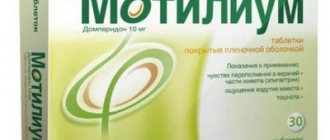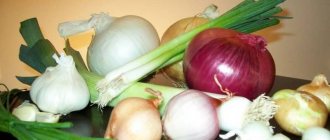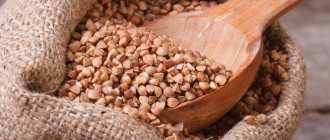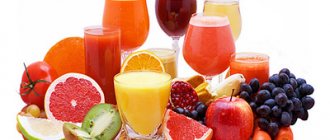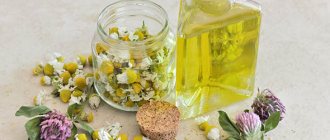No matter what form of gastritis a person suffers from, he will have to follow a diet in any case. This will avoid complications of the disease and speed up the recovery process. And with a mild form of gastritis, it becomes an effective preventive measure. By following doctors' instructions and eating the right food, the patient forgets about exacerbations for a long time.
Since fruits contain many nutrients and vitamins, some types are allowed for stomach diseases. However, you still have to follow certain rules. For example, do not eat a lot of sour apples and citrus fruits, as they irritate the mucous membranes and aggravate inflammation. If you don’t yet know whether kiwi is good for gastritis, our article will help you find the answer to this question.
Properties of kiwi
This is a valuable berry that is used not only as a delicious dessert, but also as a medicinal product. Kiwi for gastritis is valued for its beneficial effects. Its properties are as follows:
- If you eat 1 berry every day, then a person receives the required amount of ascorbic acid.
- Kiwi contains a lot of vitamin C, which has a beneficial effect on human immunity. Moreover, there is more of this component than in currants or lemon.
- Thanks to organic acids, salts are removed from the body and the blood thins. Therefore, the berry is useful for people who have heart and vascular diseases.
- The berry has an anti-inflammatory effect.
- It doesn't have many calories, so it will be useful for people who control their weight.
- The product is used to treat pathological bleeding, tuberculosis and caries.
- It contains tanning components and pectin, which provide anti-inflammatory and enveloping effects. This is considered an excellent prevention of ulcers.
Therefore, kiwi is useful for gastritis, but depending on the form of the disease. With low acidity, the fruit will be beneficial. Moreover, you can use it as an independent dish, or prepare various desserts and drinks.
About the product
Kiwi is a small fruit with a pale brown skin and bright green or yellowish flesh dotted with numerous seeds. The calorie content of fruits is low, so they can be included in the menu of a wide variety of diets, including those intended for weight loss. Benefit is determined by a number of components:
- Vitamin C.
- Pyridoxine.
- Folic acid.
- Iron.
- Zinc.
- Phosphorus.
- Iodine.
- Calcium.
- Potassium.
The pulp contains a lot of water and dietary fiber, which have a beneficial effect on the functioning of the gastrointestinal tract and, when consumed internally, become a kind of “broom” for toxins and ballast metabolic products.
Contraindications
It is advisable not to consume berries in some cases:
- For allergies, as there may be intolerance. This manifests itself in the form of a rash and itching, and in difficult situations there may be swelling of the larynx.
- If you have kidney disease, since the product contains water, and this is a load.
- Kiwi contains rough parts that cannot be completely digested. This is useful for a healthy body, especially for constipation. But with inflammation of the pancreas, this is considered a load.
Benefits of dried kiwi fruits
Dried kiwi, if consumed regularly, helps solve digestion problems and normalize metabolism. This was proven as a result of scientific research in 2007: eating dried fruits twice a day for a month normalizes metabolism and relieves constipation. The dried fruit helps prevent oral diseases. In particular, it serves as a means of preventing periodontitis and periodontal disease. It also helps strengthen bone tissue and rejuvenate the skin. Amino acids and a set of vitamins in kiwi help get rid of age-related pigmentation and normalize the water-fat balance of the skin.
The plant compound inositol, contained in dried Chinese gooseberries, stimulates brain activity and tones the nervous system. Effective in the fight against depression and depression. Dried fruits help cope with cancerous tumors. In China, they are required to be included in the diet of patients undergoing chemotherapy. The composition of the components of dried fruit suppresses the growth of cancer cells, destroys their shell, and in general, promotes their destruction. In addition, it increases the sensitivity of body cells to insulin, which is beneficial for diabetics.
When are berries allowed?
It is allowed to eat kiwi for gastritis with low acidity, as well as with normal levels. Moreover, it can be consumed fresh, in the form of jam, preserves. Juices, compotes, pastilles and dried fruits are prepared from it. It is advisable to eat it before lunch: 1 piece fresh or drink juice from 1-2 berries.
Can I have kiwi for erosive gastritis? This is due to the content of tannins and natural pectin, which has a beneficial effect on the mucous membrane. These properties are especially useful for erosive disease. The berry can be used to prevent stomach ulcers, since the components it contains protect against the development of the disease.
The product helps the digestive system recover from gastritis or ulcers. For gastritis with high acidity, kiwi is not allowed because it contains a lot of acid. Because of this, the person will suffer from pain and burning, which will also cause the development of ulcers.
How to eat and what to cook
The range of things that can be made from kiwi is not limited to desserts. Of course, Chinese gooseberries are good in fruit salads, jams, preserves, and ice cream, but connoisseurs of culinary secrets even use them in marinades for fish and meat. The fact is that actinidin from kiwi pulp breaks down protein and softens meat fibers. As a result, the finished dish is tender and savory in taste.
Kiwi juice is actively used in the production of liqueurs, tinctures, light sparkling wines, the preparation of alcoholic and non-alcoholic cocktails, sauces and salad dressings.
The question of how to eat kiwi can be answered in one phrase - how you like it: raw or dried, in slices or rings, with your hands or a spoon. This fruit is good in any form. The only thing you need to carefully monitor is the integrity of the outer shell of the fruit, especially when you eat it with the peel. If the skin is torn off or damaged, pathogenic bacteria penetrate inside and actively multiply in the nutrient medium of the sweet pulp. By eating such a fruit, you risk getting poisoned.
How many juicy berries you can eat per day depends on your health and age. For adults, 2-3 fresh kiwis are recommended, provided there are no contraindications, which we will discuss below. Diabetics should limit themselves to 1-2 fruits 2-3 times a week, after consulting with a doctor.
For those who like to eat at night, there is great news - with kiwi you don’t have to worry about the calories you’ve consumed, since this fruit is low in calories, and if eaten in the evening, especially on an empty stomach, it actually “works” for you. breaking down fats and speeding up your metabolism while you sleep.
Is it possible for small children to eat kiwi? It is better to check with your pediatrician. In any case, this fruit should not be given to a child under 3 years of age, since it is still exotic, and there is always a risk of developing allergies and digestive disorders. Upon reaching the age of three, you can gradually introduce kiwi into the diet, observing the reaction of the child’s body.
Healthy dishes
Kiwi for gastritis with low acidity is useful not only fresh, but also in the form of jam, compotes, jelly. You can use the following recipes:
- Jam. To prepare it you will need kiwi, apples (1 kg each), sugar (2 cups), half a lemon. Fruits must be washed, peeled, and cut into small pieces. Then they need to be covered with sugar and mixed with water. Cooking lasts 20 minutes 4 times, each time the product should be allowed to cool. The jam should be thick and dark. They need to fill the jars and screw them on.
- Compote. To prepare it you will need kiwi (3 pcs.), sugar (3 tbsp.), water (0.5 liters). If desired, you can add cloves and cinnamon. Kiwi needs to be peeled and cut into pieces. Add sugar and kiwi to boiling water. Cook for 5 minutes.
- Jelly. To obtain it you will need kiwi (500 g), sugar (200 g), gelatin and water. Gelatin must be diluted according to the instructions indicated on the package. Kiwis are peeled and cut into small pieces, and then they must be pureed using a blender. Place the resulting puree and sugar in a saucepan. Cook everything until the sugar dissolves. Turn off the heat and add gelatin, mix everything thoroughly. The mass must cool, and then it is poured into molds and put in the refrigerator.
- Paste. Kiwi should be peeled and chopped in a blender. You can add honey to taste. The resulting mass should be placed on a baking sheet covered with parchment. The composition must be spread, and you can bake at temperatures up to 110 degrees for about 4-6 hours. The finished pastille is cut into portions.
Each recipe produces delicious and healthy dishes. They will serve not only to treat gastritis, but also to generally strengthen the body. In these types, the fruits are perfectly digestible. For any form of gastritis, you need to adhere to nutritional rules to recover. This will prevent it from getting worse. But it should be remembered that food must be properly prepared and rich in vitamins and minerals. Therefore, you should not give up fruits and vegetables.
How to get the most benefit
Kiwis can be stored for a long time, so it is recommended to eat them fresh whenever possible. Many useful substances are destroyed not only during heat treatment, but also under the influence of air. Therefore, fruits should be peeled immediately before consumption. The best way to eat them is whole, pitted, without cutting into slices. Nutritionists advise peeling the skin as thinly as possible to preserve all the vitamins inside. It is advisable to combine fruits with other fruits, berries, vegetables or meat. Not recommended: with dairy products and sweets.
Which fruit should you not choose?
A low-quality product has the following signs:
- hardness;
- softness;
- the presence of white fluff;
- the smell of wine;
- spots;
- there is accumulation of moisture;
- plaque;
- damage;
- traces of sticky substances.
The aroma of a quality fruit is similar to the smell of strawberries, gooseberries and melon. If it is harsh, then you should not buy it. It is more likely that the berry is spoiled. The hard fruit can be left to ripen, and in a few days it will be ripe.
How to choose a tasty fruit
As far as I know, you can choose kiwi only by appearance; there are no other ways.
- The surface of the berry should be smooth, without damage, wrinkles, dents, mold or plaque.
- The fluff from the peel can be peeled off quite easily.
- The fruit is elastic to the touch, but not too hard.
- The aroma is subtle, with citrus notes.
If you still missed the mark and bought unripe fruits, the situation can be corrected with the help of apples, pears, bananas or apricots. Simply place any of these fruits along with the kiwi in a paper bag or vase and leave at room temperature for 3-5 days. The ethylene released from them will help the kiwi ripen.
Diet for gastritis
Gastritis is a common pathology, but often undiagnosed, as it is asymptomatic. Sometimes you may experience loss of appetite, nausea, bloating, belching and abdominal pain for a long time. In more severe cases, vomiting blood and “black stools” are possible due to blood entering the intestines. Also, gastritis can lead to the development of other pathologies, including cancer.
Causes of gastritis
- Helicobacter pylori infection;
- severe alcohol poisoning;
- long-term use of non-steroidal anti-inflammatory drugs (ibuprofen, aspirin);
- autoimmune diseases (rare).
Diet is one of the important components in the treatment of gastritis. Food itself usually does not cause gastritis, but some foods can irritate the stomach lining, while others can reduce inflammation. Limiting certain foods may help relieve gastritis symptoms, and eating anti-inflammatory foods may help relieve the problem.
The best approach to treating gastritis is to avoid foods that can cause inflammation or increase existing irritation of the gastric mucosa.
A patient with acute gastritis may only be on the diet for a few weeks or months until symptoms improve. In some cases, it is enough to eliminate the use of certain foods or medications to feel an improvement.
Gastritis caused by other diseases may require long-term dieting.
Foods that should not be consumed if you have gastritis
- Sour fruits (citrus fruits) and vegetables (onions, garlic);
- Alcohol;
- Chocolate;
- Coffee and black tea (green tea is possible, in limited quantities);
- Dairy products;
- Carbonated drinks;
- Energetic drinks;
- Fatty foods, fast food;
- Fried eggs;
- Ice cream, cakes and pastries;
- Marinades, mayonnaise, cream sauces;
- Nuts (can be consumed in small quantities);
- Potato chips, packaged snacks;
- Processed meat (sausage, hot dogs, bacon);
- Red meat;
- Fresh bread, pasta made from refined flour;
- Smoked meat and fish;
- Spices including black pepper, chili powder, mustard seeds, nutmeg and cayenne;
- Tomatoes and tomato products (juice, paste, sauce);
- Corn and corn products.
Recommendations for eating with gastritis
To reduce the degree of inflammation, it is recommended to eat in 4-5 small meals instead of breakfast, lunch and dinner. The transition to multiple meals must be done carefully so as not to create excess stress on the stomach.
Between 20 and 50% of cases of gastritis are caused by the bacterium Helicobacter pylori. Eating foods that help kill bacteria (cauliflower, broccoli, watercress, celery) may be one of the best nutritional strategies.
Don't overdo it in trying to heal your stomach with healthy foods.
Foods you can eat for gastritis
- Beans and legumes (as tolerated);
- Eggs, egg whites (not fried);
- Seafood, shellfish (not fried);
- Honey;
- Low-acid vegetables (cucumber, white potatoes, pumpkin, carrots);
- Low-sugar, low-acid fruits (blueberries, strawberries, apples);
- Soft cheese with low salt content;
- Oats, barley;
- Peppermint, ginger, turmeric;
- Plain, low-fat yogurt;
- Foods rich in probiotics (sauerkraut, kimchi, kombucha);
- Rice;
- Lean poultry (chicken, turkey);
- Whole grain bread and pasta.
Diet tips for gastritis
- Start by eliminating risky foods, you'll be more likely to experience improvement in your symptoms. After a few weeks, reintroduce one food at a time and see if gastritis symptoms appear. This practice will allow you to identify the foods to which your stomach reacts most acutely. Often this is not one specific product, but a combination of them. For convenience, keep records with a list of foods excluded and returned to the diet.
- Create a nutrition program based on the balance of proteins, fats, carbohydrates and energy value of foods and stick to it.
- Pay attention to hygienic food preparation conditions to avoid new Helicobacter pylori infections.
- The diet for gastritis excludes fatty foods, so use cooking methods that do not involve frying (steaming, baking, stewing)
- When creating a diet, you need to pay attention to concomitant diseases (food allergies, diabetes, etc.) and your dietary habits.
- If gastritis symptoms worsen, consult your doctor immediately.
At the “Naedine” clinic you will be consulted, will carry out all the necessary examinations and will help you create an individual nutrition plan.
There are five gastroenterologists at the clinic. We work every day. You can make an appointment with a gastroenterologist at the Naedine Clinic by phone in Kirov: (8332) 32-7777 or through the form on the website.
Composition and calorie content
Fresh and dried kiwi contains a rich array of beneficial nutrients, including vitamin C, calcium, folic acid, antioxidants and omega-3 fatty acids. The calorie content of fresh kiwi fruit in peel per 100 g is 47 kcal, without peel - 40 kcal, dried fruit (dried/dried kiwi without sugar) - 303.3 kcal, candied fruit - 341.2 kcal. Average calorie content 1 pc. equals 78 kcal.
Nutritional value of fresh kiwi in peel per 100 g:
- fats – 0.4 g;
- proteins – 0.8 g;
- carbohydrates – 8.1 g;
- water – 83.8 g;
- dietary fiber – 3.8 g;
- ash – 0.6 g;
- organic acids – 2.5 g.
The ratio of BJU of fresh fruit is 1/0.5/10.1, dried – 0.2/15.2/14.3 per 100 g, respectively.
For dietary nutrition, it is recommended to consume fresh kiwi, but no more than two fruits per day, or dried without sugar (with peel possible) - 3-5 pieces. Candied fruits, unlike dried fruits, are candied fruits, more like regular candies, and therefore are not suitable for sports, healthy and proper nutrition.
Table of the chemical composition of kiwi per 100 g:
| Name of substance | Contents in fruit |
| Copper, mg | 0,13 |
| Aluminum, mg | 0,815 |
| Iron, mg | 0,8 |
| Strontium, mg | 0,121 |
| Iodine, mcg | 0,2 |
| Fluorine, mcg | 14 |
| Boron, mg | 0,1 |
| Potassium, mg | 300 |
| Sulfur, mg | 11,4 |
| Calcium, mg | 40 |
| Phosphorus, mg | 34 |
| Sodium, mg | 5 |
| Magnesium, mg | 25 |
| Chlorine, mg | 47 |
| Silicon, mg | 13 |
| Vitamin A, mcg | 15 |
| Ascorbic acid, mg | 180 |
| Choline, mg | 7,8 |
| Vitamin B9, mcg | 25 |
| Vitamin PP, mg | 0,5 |
| Vitamin K, mcg | 40,3 |
| Vitamin E, mg | 0,3 |
| Vitamin B2, mg | 0,04 |
© LukasFlekal — stock.adobe.com
In addition, the berry contains starch in the amount of 0.3 g and disaccharides – 7.8 g, saturated fatty acids – 0.1 g, as well as polyunsaturated fatty acids such as omega-6 – 0.25 g and omega-6 3 – 0.04 g per 100 g.
Dried kiwi contains almost the same set of minerals (macro- and microelements) as fresh fruit.
How much kiwi can you take per day?
The established norm for eating fresh kiwi per day is 2-3 medium-sized pieces. For dried fruits it is 100-150 g. Moreover, it is better to eat after lunch, but not in the evening. Still, sucrose is less absorbed in the second half of the day and can affect fat deposits in the sides and abdomen. Nutritionists recommend eating kiwi (whether fresh or dried) every day. Of course, if there is such a possibility. But do not add sugar to the fruit, as the benefits from its consumption will be much greater.
Recommendations for choosing dried fruits
Before buying dried fruits, you need to pay attention to their color . Kiwi pieces should be green - from light to rich deep tone. If yellowness or darkening appears on the surface, it is better to discard the product. It is either spoiled or produced with violations of the drying technology. Packaged dried fruits must be in transparent, tight packaging. It is desirable that it bear the “Bioproducts” label developed by the EU for food manufacturers. It guarantees the use of natural ingredients and standardized processes in production. It is simply impossible to verify compliance with standards for the production and storage of fruits. Therefore, it is better to purchase them from trusted suppliers (if possible). And at home, before use, rinse in running water to get rid of dust and contaminants on their surface.
Kiwi in fresh and dried form is extremely beneficial for the body, but in moderation. It is able to heal, rejuvenate a person, and normalize metabolic processes in his body. But if abused, it can have the opposite effect: lead to frustration, dehydration and a depressed state. So you should eat it carefully, following the recommendations of nutritionists.
What are consumers saying?
As noted above, kiwi is extremely popular all over the world.
Over the course of a long time, a certain opinion has formed about this product. However, there are both positive and negative reviews. If we talk about the good, many say that regular consumption of kiwi leads to improved mood, well-being and skin tone. Along with a healthy lifestyle, this gives an amazing effect. In addition, the fruit can be used as an ingredient for masks, shampoos, etc. There are also disadvantages that definitely need to be mentioned. It is noted that allergies occur very often. Basically, this is due to the high content of vitamin C. In most cases, there are no negative reviews about kiwi. Reviews are either good or none at all. This is due to the fact that lovers of the fruit eat it, and those who are wary of it do not try it, and therefore do not leave negative reviews.
Healing and beneficial properties for the body
Thanks to its rich vitamin and mineral composition, kiwi has healing properties that are beneficial for the female and male body. To notice the positive effects of the fruit on health, it is enough to eat a couple of kiwi fruits a day.
The healing and beneficial effects of kiwi on the body are manifested as follows:
- Bones are strengthened and the functioning of the musculoskeletal system is improved.
- Sleep patterns are normalized and insomnia disappears. The time of deep sleep increases, a person falls asleep faster.
- The functioning of the cardiovascular system improves and the heart muscle strengthens. Thanks to kiwi seeds (seeds), the likelihood of developing heart ischemia and stroke is reduced. In addition, kiwi is suitable for the prevention of hypertension.
- The nervous system is strengthened. It is believed that the fruit helps in the treatment of diseases such as autism.
- The functioning of the visual organs improves and the risk of developing eye diseases is reduced.
- The risk of developing asthma is reduced, and symptoms such as shortness of breath and wheezing are reduced. In addition, the berry reduces the symptoms of upper respiratory tract infection.
- The functioning of the digestive system improves. Symptoms of diseases such as irritable stomach syndrome, diarrhea, constipation, bloating, accompanied by painful sensations, are eliminated. Regular consumption of kiwi helps speed up metabolism and improve digestion.
- The functioning of the urinary system is improved, due to which stones are removed from the kidneys and their re-formation is prevented.
- Increases male potency. The fruit is considered a preventative against erectile and other sexual disorders.
- Immunity is strengthened.
- Increases endurance and performance.
Kiwi is often used by women for cosmetic purposes. It is used to make masks for the face and hair follicles.
Thanks to the large amount of vitamin C in its composition, the fruit acts as a preventative against colds and viral diseases.
Note: if you eat kiwi on an empty stomach, you will saturate your body with energy and vigor for several hours ahead.
Benefits of kiwi with skin
The peel of kiwi is no less useful than the pulp of the fruit. It contains a lot of fiber and other beneficial compounds.
The benefits of fruit with skin are as follows:
- the functioning of the gastrointestinal tract improves, the intestines are cleansed due to a mild laxative effect;
- prevents the development of pathogenic bacteria in the intestines;
- when applied externally, the healing process of shallow wounds on the body is accelerated;
- Prevents premature skin aging;
- the body is saturated with vitamins and minerals.
In addition, kiwi peel can be used on its own as a face mask.
Before eating kiwi in its skin, the fruit must be thoroughly washed and wiped with a dry kitchen towel.
Health Benefits of Juice
Systematic consumption of freshly squeezed kiwi juice accelerates the process of burning fats formed on the walls of blood vessels, which increases the risk of blood clots.
The benefits of juice for human health are as follows:
- the functioning of the digestive system improves;
- the risk of kidney stones is reduced;
- pain from rheumatism decreases;
- the process of hair graying slows down;
- fatigue decreases;
- brain activity increases;
- the risk of cancer formation is reduced;
- physical activity increases;
- blood sugar levels decrease;
- the blood is cleansed and its composition improves.
Freshly squeezed juice is recommended for people suffering from diabetes, athletes and girls who want to lose weight. In addition, systematic consumption of fruits and fruit juice improves well-being and has a positive effect on overall health.
© alekseyliss — stock.adobe.com
Benefits of dried kiwi for humans
Dried/cured kiwi is a source of vitamin C, iron, magnesium, calcium, zinc and fiber. The benefits of moderate consumption of dried fruits without sugar (30-40 g per day) are as follows:
- bowel function improves, constipation is prevented and the manifestation of irritable bowel symptoms is reduced;
- inflammation of the gums is relieved;
- bone tissue is strengthened;
- skin condition improves (dark spots and age spots disappear, water-fat balance is maintained);
- mood improves;
- brain function increases;
- signs of depression disappear;
- the risk of developing cancer is reduced;
- cell sensitivity to insulin increases;
- The level of bad cholesterol decreases.
In addition, with the help of dried kiwi, you can strengthen the heart muscle, improve vision and cleanse the body of toxins.
Natural dried fruits that do not have a sugar coating bring benefits to the body. Candied fruits are not considered healthy products.
Benefits of kiwi seeds
It is recommended to eat kiwi whole, along with the seeds, as they contain a lot of fiber, which improves the functioning of the gastrointestinal tract. Oil is made from the seeds, the benefits of which are not only cosmetic, but also healing, since it contains many unsaturated fatty acids.
In cosmetology, kiwi seed oil is used to rejuvenate, tighten and increase skin elasticity. The oil reduces the appearance of varicose veins, eliminates redness and pain after a burn, relieves acne, dryness and irritation on the skin.
For medicinal purposes, the oil is used to relieve inflammation in skin diseases such as psoriasis, eczema and dermatitis.
With the addition of oil, a natural hair conditioner is made that will restore the strength of the hair follicles.
